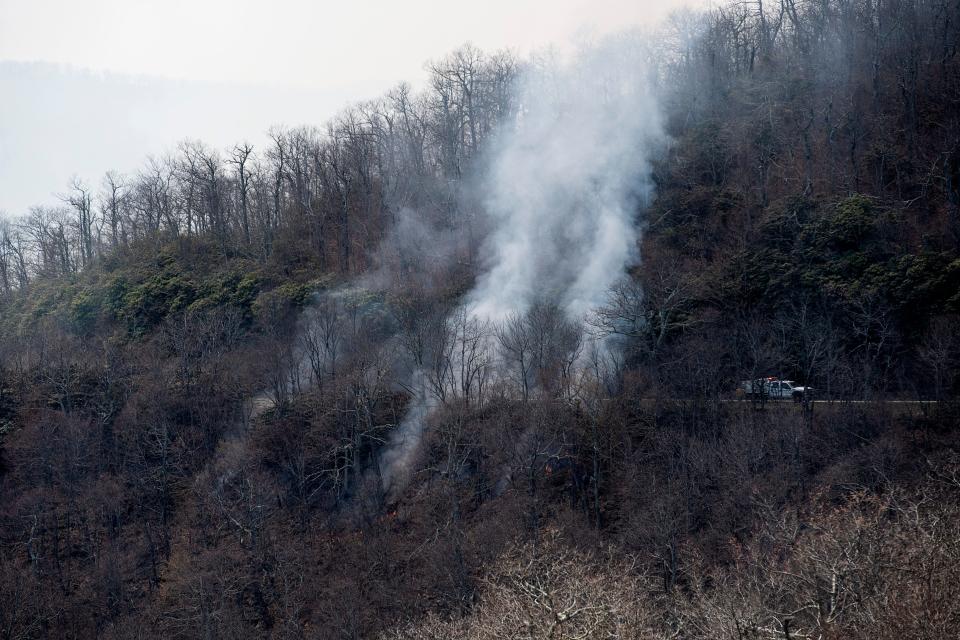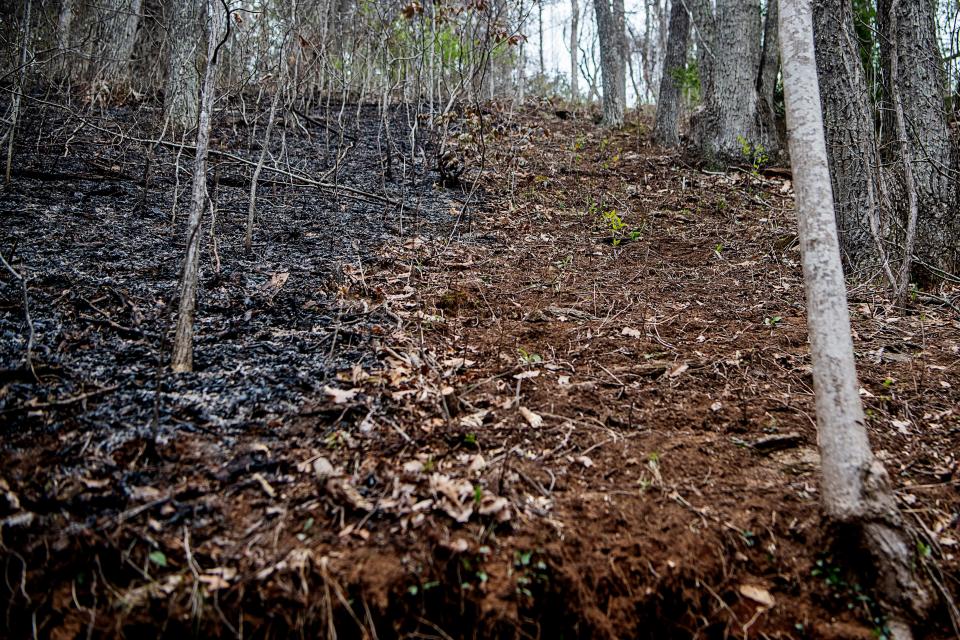Answer Man: Is Asheville at increased wildfire risk? How can we protect our homes?
ASHEVILLE – Wildfires are roaring in Western North Carolina. The Poplar Drive Fire in Henderson County was lasted reported as more than 400 acres and 5% contained. In the Cherokee County area of Nantahala National Forest, the Collett Ridge Fire eclipsed 4.5 square miles without any containment. There was even a “fast-moving” brush fire on Deaverview Road in West Asheville, which was ultimately contained without injury or major structural damage.
Experts do not think a rainfall that will put an end to the dry conditions is coming any time soon. Buncombe County just declared a state of emergency, banning all burning in the county except for grilling.
In the absence of a surprise downpour, what should homeowners do to protect their properties from wildfires? Answer Man has your back.

Have a question for Answer Man? Email Executive Editor Karen Chávez and the Citizen Times may answer one of your questions in an upcoming column.
Question: I've heard that with the advent of climate change, the likelihood for more intense fires is increasing. Are we at risk in Asheville, where a lot of people are moving due to being a climate change haven? How can we protect our properties from wildfires?
Answer: To the first part of this question, "Yes, everyone is at risk."
More: Asheville has highest move-in vs. move-out ratio in country: moving trends report
"Historically and even now, Asheville is a bit of a climate change haven, but it is still being affected by climate change," said Zac O’Donnell, who is a coordinator for the Southern Blue Ridge Prescribed Burn Association.
"Increasing temperatures on the planet in general are going to exacerbate wildfires on the planet. Human impact and nonnative animals and plants will make areas more susceptible to wildfires. Asheville’s drought also contributes to drier conditions that have led to wildfires. Asheville’s population is also increasing. Urban development in proximity to woods is going to raise the risk of wildfires," he said.
More: 2 firefighters treated, released for injuries sustained fighting Edneyville wildfire
More: Great Smoky Mountains National Park bans backcountry campfires due to high wildfire risk
Protecting homes from a wildfire is almost like preparing to defend a football team ― homeowners need to prepare for the ground game, and an aerial attack. Wildfires can approach homes mostly by spreading on the ground and from embers blowing in the wind and landing on roofs and porches through the air.
Homeowners can take a few immediate steps to protect their properties from wildfires spreading on the ground, experts say.

To protect the home from surface fires, homeowners should clear fuel from the immediate area surrounding the house. That means gathering or taking down dead leaves, trees and plants from the area immediately surrounding the home, according to O’Donnell, who also recommended removing combustible trees, like evergreens or conifers.
Buncombe County Assistant Emergency Service Director Ryan Cole said that property owners should try to clear the area 100 feet from the home of dead vegetation and debris.
Homeowners need to make sure they have a green space around their property, Asheville Fire Department spokesperson Kelley Klope said.
To protect from flying embers, homeowners need to clear the leaves and pine needles from their gutters, and remove dead leaves and debris from their roofs, O’Donnell said.
For homeowners looking to go the extra yard, making changes to their landscape is an option. People can surround their homes with rocks instead of mulch or develop a gravel buffer in the immediate area around their homes. O’Donnell also said that people can use cement siding around their homes, rather than wood. These projects can be costly, however, and can alter a home’s aesthetic.
Cole recommended that property owners have a “go bag” ready in case a fire is approaching the home. Klope said that fire departments will step in and tell people when they need to evacuate.
More: Buncombe County declares state of local emergency, banning all burning amid fire risk
More: Open burning banned in 14 WNC counties as fires grow, 'severe' drought continues
Finally, it is important that fire trucks can approach the home in case there is a fire. There needs to be a 12-by-12-foot opening so firefighters can get to the home. Bridges to cross streams to homes need to withstand the weight of a fire truck.
Anyone interested in learning more can visit the National Fire Protection Association website at www.nfpa.org, which Klope, Cole and O'Donnell referred to as a reference.
Mitchell Black covers Buncombe County and health care for the Citizen Times. Email him at mblack@citizentimes.com or follow him on Twitter @MitchABlack. Please help support local journalism with a subscription to the Citizen Times.
This article originally appeared on Asheville Citizen Times: Asheville a climate change haven? How to protect homes from wildfire?
